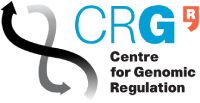About the Project
"ChromDesign” is a European innovative and interdisciplinary Research and Training network, which aims to characterize the impact of the 3D chromatin organization on gene regulation during cellular differentiation and in several human disorders, and to train junior researchers in the biomedical field, either in academia or in the private sector. The "ChromDesign" training programme will foster mobility across countries, disciplines and sectors. Through secondments and network-events, we will ensure that all ESRs have opportunities for exposure to different disciplines and environments: academia, industry, design and communication, hospitals, publishing, and non-for-profit funding entities. Most network training will be based around five summer and winter schools that combine hands-on research workshops, academic lectures as well as transferable skills, and innovation and entrepreneurship training sessions.
Description subproject ESR11:
Objectives:
Understanding the role of:
1. DNA binding
2.Transcription
3.Insulator proteins
4. Polycomb components in the establishment of chromatin architecture during neuronal differentiation.
Methodology:
The genome of higher eukaryotes is organised in a hierarchy of structures — From chromatin loops, to topologically associating domains (TADs), to genome compartments (GCs), to chromosome territories (CTs) that are spatially co-organised in the 3D space of the cell nucleus. At each level, chromatin architecture is regulated and impinges on genome functions, such as gene expression, DNA replication and repair.
Recent studies, including work in the participant’s labs, have identified players that define loops, TADs and GCs, but their mechanisms of action are not understood. In particular, the boundaries of TADs can involve transcribed genes, but shows that the act of transcription per se is not sufficient in order to drive the formation of a TAD. Furthermore, CTCF can form TAD boundaries, but little is known of its mechanism of action. Drosophila also has a CTCF protein that binds the same sequence motifs, but does not suffice to specify TAD boundaries in that species.
ESR11 will drive DNA-binding proteins to bind in a genomic region where there is normally no such binding, or prevent them from binding when they should. Studying the effect of DNA binding perturbation on the 3D domain architecture, by separating out the effects of DNA-binding from those of transcriptional induction.
In addition, ESR11 will dissect the function of mouse vs Drosophila CTCF. Replacing mouse CTCF with it’s fly counterpart and study cell viability and 3D genome function. Vice versa, she/he will express the mouse protein into flies, dissecting them further by making partial swaps of only the DNA binding domain or of portion of its intrinsically disordered portion.
Hi-C and microscopy will identify protein portions involved in the species-specific functions for this gene. Finally, ESR11 will analyse the specific function of one PcG protein group, including the PHC1, PHC2 and PHC3 components of the PRC1 complex. The expression of these genes varies during neuronal differentiation, concomitantly with the strong loss of ELRIs. Identifying which of these proteins can fulfil this function along with the study of its mechanisms of action and the consequence of ELRIs in neuronal differentiation.
Expected Results:
Increased understanding of determinants of 3D genome organisation and cell differentiation.
Planned Secondments:
CRG, Spain (3 months): Production of specific antibodies and proteomics analysis of ES cells expressing FLAG-HA tagged PHC Knock-in genes.
CNAG-CRG, Spain (3 months): Physical modeling of the 3D genome architecture in wild type and engineered cells.
Milner Therapeutics Institute, United Kingdom (1 month): Learning or testing drug development based on results.
Eligibility criteria:
• Applicants may be a national of a Member State, of an Associated Country or of any other third country.
• The candidate should hold an academic degree that enables her/him to undertake doctoral studies. Preference is given to applicants with MSc or equivalent degree.
• At the time of recruitment* by the host organisation, candidates must be in the first four years (full-time equivalent research experience**) of their research careers and not yet have been awarded a doctoral degree.
• At the time of recruitment* by the host organisation, candidates must not have resided or carried out their main activity (work, studies, etc.) in the country of their host organisation for more than 12 months in the 3 years immediately prior to the reference date.
PLEASE NOTICE THAT AN APPLICATION IS SOLELY POSSIBLE VIA THE ONLINE APPLICATION FORM (WWW.CHROMDESIGN.EU)
Funding Notes
• Depending on the hosting institute, individual projects start between November 2018 and August 2019.
Duration
• The positions are fully funded for 36 months by the European Comission under the H2020 Marie Curie Innovative Training Network Programme.
Salary
• Marie Curie ITNs provide a highly competitive salary to the ESR, including a competitive monthly living and mobility allowance and (if eligible) a monthly family allowance.
References
Bonev, B. et al. Multiscale 3D Genome Rewiring during Mouse Neural Development. Cell 171, 557-572 e524, doi:10.1016/j.cell.2017.09.043 (2017).
Ogiyama, Y., Schuettengruber, B., Papadopoulos, G. L., Chang, J. M. & Cavalli, G. Polycomb-Dependent Chromatin Looping Contributes to Gene Silencing during Drosophila Development. Mol Cell 71, 73-88 e75, doi:10.1016/j.molcel.2018.05.032 (2018).
Schuettengruber, B., Bourbon, H. M., Di Croce, L. & Cavalli, G. Genome Regulation by Polycomb and Trithorax: 70 Years and Counting. Cell 171, 34-57, doi:10.1016/j.cell.2017.08.002 (2017).

 Continue with Facebook
Continue with Facebook

